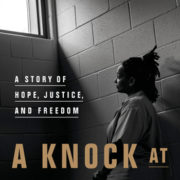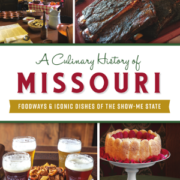Empire of the Summer Moon: Quanah Parker and the Rise and Fall of the Comanches, the Most Powerful Indian Tribe in American History by S.C. Gwynne
One not-small benefit of working at a library trucks with it a problem, and it can be stated the same way for both: a sizable reading list. Zero sympathy is expected, of course. As the saying goes, that’s like complaining that your shoes made out of gold are a touch too tight. Nevertheless, the problem remains, especially since this space is most often used to review new books. So what is to be done? In this instance, you just go ahead and pick up a title published 15 years ago,Empire of the Summer Moon: Quanah Parker and the Rise and Fall of the Comanches, the Most Powerful Indian Tribe in American History by S.C. Gwynne (not to be confused with Killers of the Flower Moon by David Grann).
As with his latest book, His Majesty’s Airship, Gwynne excels in conveying both social and political history with a compelling narrative. It helps, of course, that he chooses historical periods abounding with intrigue. Here, we’re taken back to the nineteenth century in what is now Texas, New Mexico, Colorado, Kansas, and Oklahoma. It was ruled by the Comanches, and the land was known as the Comancheria. Gwynne notes that given how rapidly the eastern agrarian tribes were subdued and relocated, the thought of Indian resistance west of the Mississippi River was not fully appreciated. The Plains Indians, also known as horse Indians, were war machines who—long before white settlers began moving en masse from the east—made war with each other. In addition to the Comanches, there were—to name a few—the Sioux, the Cheyenne, and the Apaches.
What made them so fearsome was something the Spanish inadvertently gave them: the horse. And it was an aggrieved band of people that migrated out of Wyoming who used horses most expertly, a group believed to have once been Shoshone. They would become the Comanches, and apparently they held grudges like no other. Anyone these nomads came across were subjected to absolute terror. Torture killings were common among other Plains Indians, but even the other tribes feared the Comanches.
Reading about such torture is difficult to process. We want to sort out the “why?” concerning this level of viciousness. Was the reputation the point, a cruelty that preceded them, thus clearing their path to more favorable hunting grounds? Even if that was a contributing reason, it was more than that. It’s almost as if Gwynne knows that the reader is jumping back a little, for he explains that fifth century Romans saw the Celts in much the same way. They couldn’t work out their world. The Comanches believed in many spirits. But, writes Gwynne, “there was no ultimate good and evil: just actions and consequences; injuries and damages due.” (Of course we know that whites often saw the Indians as nothing more than savages, which spurred their own orchestrated brutalities.)
As the Comanches bedeviled all comers (the Spanish and then the Mexicans), they faced their own growing peculiar problem: the Texan. Land grants are powerful enticements. And the Mexican government quite often offered them land on what would become Texas. Let these settlers deal with the Comanches, it was thought. Gwynne details a Comanche raid on an early Republic of Texas fort. It was more like a family compound than a fort, which was built too deep in Comanche territory, a reckless act to be sure. The Fort Parker massacre of 1836 was big news at the time, most notably because two children were taken. John Richard Parker would be released years later via negotiation. His sister, Cynthia Ann Parker, disappeared.
This hapless settler existence led to the formation of the Texas Rangers. Gwynne takes us through its early days, and it’s a wild ride. Basically, the Rangers were competent only when they had competent leadership, which was few and far between. One effective leader was John Coffee Hays. He understood that to fight the Comanches, you had to fight like them. He also knew they were predictable in battle to a fault. Add to that the fact that Hays was fearless and the end result was a turning of outcomes. Here’s Hays before a battle, sounding like someone out of an old western movie: “Yonder are the Indians, boys, and yonder are our horses. The Indians are pretty strong. But we can whip them. What do you say?” Well, the boys did follow him, and whip them they did. He understood surprise attacks and that on the plains there was “no expectation of honorable surrender.” The Comanches probably thought he was crazy going into a fight where he was on the wrong side of ten-to-one odds. We do know they had a name for him: Devil Jack.
In addition, Hays utilized the latest in firearm development to level the fight. Comanche warriors using bows and arrows on horseback was an overwhelming force. Hays quickly ordered the newly invented Walker Colt revolvers, which equalized a battle. Given the firearm’s effectives, it’s surprising that once Hays left for California, future iterations of the Rangers didn’t follow his lead. Even when Texas became part of the United States, the U.S. Army was slow in evolving away from the pomp of European battlefield plumage that in no way suited Indian warfare.
The Civil War meant the “Indian problem” would have to wait. The Comanches raids continued and the various tribes settled old scores with each other. It was a strange time where horse Indians raided Oklahoma reservations, where it was not unusual to see a reservation Indian owning a Black slave.
It was also during this time when Cynthia Ann Parker was found. But far from having experienced decades of torment, she had become one of the wives to a Comanche chief. She was found in the aftermath of a battle between her Comanche band and the Texas Rangers, a fight that ended with her husband being killed. Captured with her infant daughter, but separated from her two sons, she could no longer speak English. Not that she would acknowledge her captures anyway. It wasn’t until she was asked if she was Cynthia Ann Parker, that she stood, patted her chest, and said, “Me Cincee Ann.” She and her daughter were not allowed to return to the tribe. Bereft over the loss of her husband and the separation from her sons, she tried to escape many times. In her early days of captivity, she was even tied up and made to sit in what amounted to a freak show, where passersby would gawk at the “white squaw.” She would never see her sons again.
With the conclusion of the Civil War, the same men who fought in it were now the ones holding political office. Having witnessed great carnage during the war, they had little patience with the remaining Plains Indians. Disease and white buffalo hunters had already dwindled their ranks. With succinctness, Gwynne says, “There was no such thing as a horse Indian without a buffalo herd. Such an Indian had no identity at all.”
In 1867, representatives from a U.S. peace commission, which included General William Tecumseh Sherman, and representatives from various tribes met in an area just south of Wichita, Kansas. This was it, and the Indians knew it. They would no longer be free Indians. What remained of Comancheria was no longer theirs. Sherman told them there was nothing they could do about it, saying, “You can no more stop this than you can stop the sun or the moon.”
Not all entered the reservation. Some bands still roamed free. But by 1874, the U.S. government would no longer tolerate Indians who raided and killed. The U.S. Army cornered these remaining Indians in the Texas panhandle. And with the assistance of .50 caliber rifles—also called “the big fifties”—the Texas-Indian Wars came to an end. One Comanche warrior who surrendered was Quanah Parker, one of Cynthia Ann Parker’s sons.
Quanah, once a warrior who gave white Americans no quarter (especially Texans), actually had been advocating peace within his band before surrender. Once on the reservation, he adapted fairly well, even becoming friends with the Army officer who commanded the effort to force the Comanches to surrender. This was the new reality, so he embraced it. Whereas most Comanches found the notion of private property alien, Quanah realized this was the new way. His letterhead identified him as a Comanche chief and he relished the attention he received. He met with Theodore Roosevelt and happily appeared before crowds in headdress and buckskins, often beginning his speeches with a “ladies and gentlemen” salutation.
Gwynne’s writing style possesses an energy that almost dares you to put the book down. And thankfully he doesn’t make sweeping normative judgments about what transpired. Quanah’s embracing his new reality is not presented as some sort of lodestar of achievement that other Indians were meant to follow. Gwynne notes that, unlike Geronimo, Quanah’s standing among his tribe remained throughout his life. Perhaps it’s because his existence was an unusual one from the start. When his father was killed and his mother taken, he was treated poorly within his Comanche band because he was half white. Not until he distinguished himself as a warrior did he re-elevate his status. The man who once killed many a Texan would go on to adopt two white boys, one he found working at a circus in San Antonio. He reconnected with his extended Parker relatives, and two of his daughters married white men. To Gwynne, Quanah’s optimism is impressive, especially since he once lived a life of freedom on the plains. There’s even some optimism on his gravestone:
Resting here until day breaks
And shadows fall
And darkness disappears
Is Quanah Parker, the last chief of the Comanches
Review by Jason Sullivan











